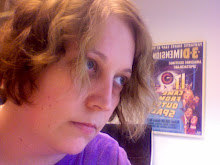Yesterday I attended an event on instructional technology. One part featured an instructor who does web-based research assignments in his class. This intrigued me because it is something I'd like to do. But his students' web-projects were quaint, almost picturesque uses of web technology. They followed a strict, text heavy design template and few sites linked to outside material. It was like watching a Hypercard presentation!
So here's the thing--time moves quickly online and the timeline of web styles moves even faster. So what does epitomize good web design, circa 2005? Is it blog-based content, lots of links? flash animation? e-commerce that is elegant? Is it the minimalist style of Google with its intentional use of blank space and a "clean" looking site? How does one uncover the key formal elements of something so deeply in flux?
It reminds me a bit of Rosalind Krauss and Yves-Alain Bois' book Formless, about how the narrative of modernism needed to be shifted to a more horizontal and scatalogical orientation in order to be a more inclusive and accurate story. If something is formless, talking about its form is a challenge, is it not?
Yet certain web forms and formalities have already become dominant--one recognizes the sign for a link or how to approach a form or even what kind of content to search for. We are no longer simply boolean. Or perhaps we are more deeply boolean since our brains operate in search terms?
Back in, um, 1997, I remember a disagreement I had with Mark Poster about the pre and post e-commerce Internet. Because claims about one might not apply to another. Today I'd say there is no one Internet, just many networks with many points of entry, some permutations intersecting with one another. The Internet is like the kind of stuff you hear about in physics, a million emergent possible realities, all layered amongst each other, each waiting to emerge.
Subscribe to:
Post Comments (Atom)


No comments:
Post a Comment